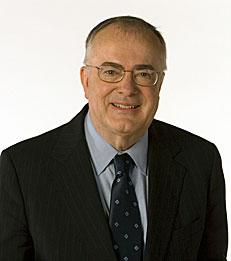Opinion
Five Ways to Save Ferguson’s Economy
—


Here we have a valuable, nearby warning that empowerment, desirable as it may be, is limited in its ability to foster development.
By Ingo Walter
Drive a short distance west of “ground zero” in Ferguson toward Lambert St. Louis International Airport, and you will find the overgrown lots, blocked streets and crumbling building foundations of Kinloch, once an all-black town of about 10,000 residents—one of nine such cities in the US back in the 1960s. Kinloch at the time was a politically autonomous black community, created in 1948 by residents of an unincorporated area of St. Louis County—then a blank space on the map of mainly middle-class white towns that had developed the region over the years.
Some residents had migrated to Kinloch from the South in the 19th and early 20th centuries. Others settled as returning soldiers after World War I, and some moved from Illinois after the East St. Louis race riots of 1917. After World War II, new residents often sought refuge from living and housing conditions facing African Americans in the city of St Louis.
Kinloch residents were fully empowered at the municipal level, and were free to plan and conduct their own affairs by whatever means they chose to try improving the conditions of their life. Indeed, the town was established on the premise that, through a substantial measure of self-determination, African Americans could gain what they were denied in superordinate white-dominated political structures. The town formed a circumscribed and identifiable political unit, and its well-marked borders formed social as well as political boundaries. For advocates of separatist-style Black Power in those years, Kinloch might have provided an ideal beta-test for the independent development of black-led institutions and separatism.
Read full article as published in Quartz
___
Ingo Walter is the Seymour Milstein Professor of Finance, Corporate Governance and Ethics.
Some residents had migrated to Kinloch from the South in the 19th and early 20th centuries. Others settled as returning soldiers after World War I, and some moved from Illinois after the East St. Louis race riots of 1917. After World War II, new residents often sought refuge from living and housing conditions facing African Americans in the city of St Louis.
Kinloch residents were fully empowered at the municipal level, and were free to plan and conduct their own affairs by whatever means they chose to try improving the conditions of their life. Indeed, the town was established on the premise that, through a substantial measure of self-determination, African Americans could gain what they were denied in superordinate white-dominated political structures. The town formed a circumscribed and identifiable political unit, and its well-marked borders formed social as well as political boundaries. For advocates of separatist-style Black Power in those years, Kinloch might have provided an ideal beta-test for the independent development of black-led institutions and separatism.
Read full article as published in Quartz
___
Ingo Walter is the Seymour Milstein Professor of Finance, Corporate Governance and Ethics.
